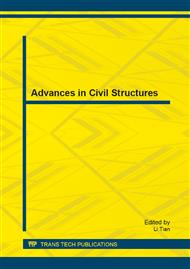p.1047
p.1052
p.1057
p.1061
p.1066
p.1072
p.1079
p.1084
p.1088
A New Designed Hot Tearing Apparatus Based on the Applied Forces
Abstract:
The objective of this paper is to introduce a simple experimental apparatus based on the applied forces for quantitative assessment on hot tearing behavior in aluminum alloys. According to the experimental procedure, molten metal is cast in the rod-shaped mold cavity. One side of the casting specimen is hooked by a steel bolt which restrains its free contraction and transfers the tensile forces during solidification. A steel threaded rod connected to a load cell which records the real-time measurement of the tensile forces during every experiment. Thermal history is monitored by K-type thermocouple. The data of the temperature and tensile forces are acquired by a data acquisition system. Test of the experimental apparatus is conducted with A356 and Al-5wt%Cu alloy to investigate the accuracy of the experimental apparatus and modify its operating parameter. The tensile forces curves and the temperature curves of the specimens are obtained by experiment. This data provide useful information about hot tearing formation and solidification characteristics, from which their quantitative relations are derived. In this manner, the hot tearing behavior in aluminum alloys can be studied by this experimental apparatus based on the applied forces.
Info:
Periodical:
Pages:
1066-1071
Citation:
Online since:
August 2013
Authors:
Keywords:
Price:
Сopyright:
© 2013 Trans Tech Publications Ltd. All Rights Reserved
Share:
Citation:


